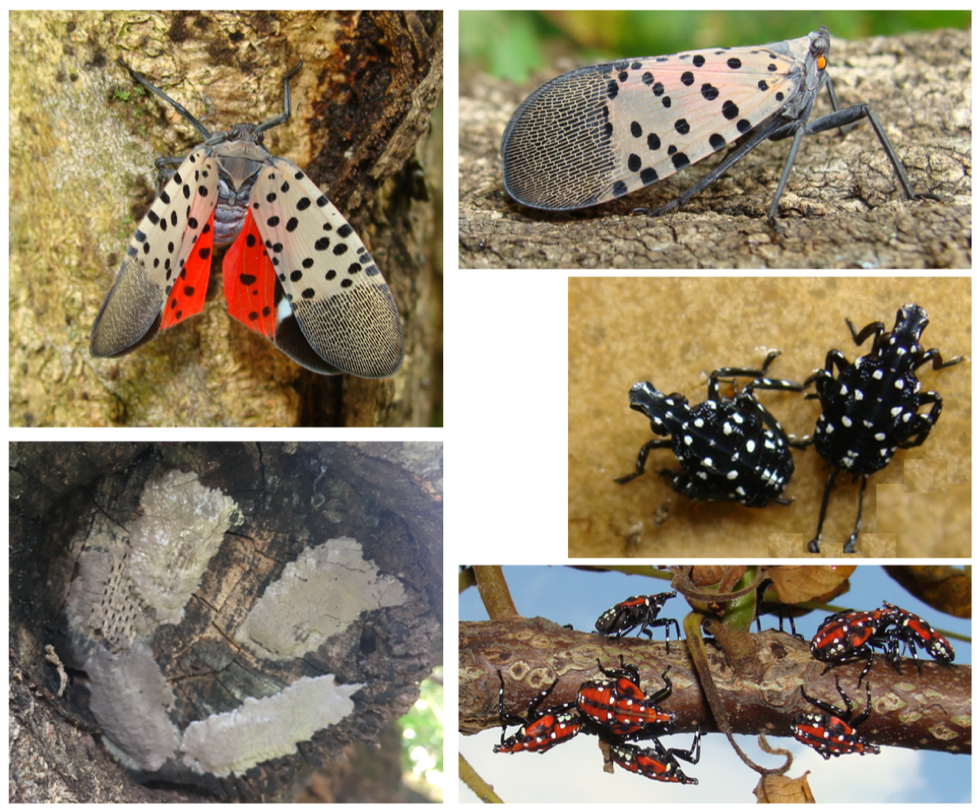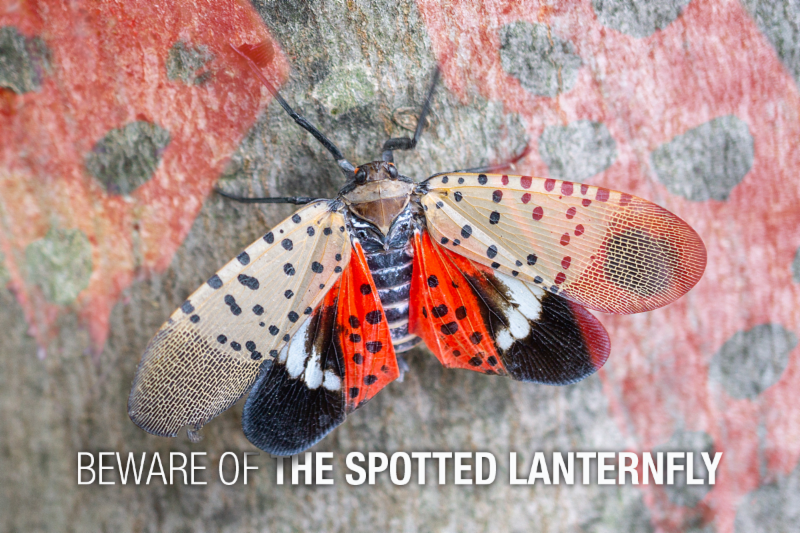A highly invasive pest
The Spotted Lanternfly was first found in the United States in 2014, and has since spread to more than 11 states throughout the upper Mid-Atlantic, southern New England, and parts of the Midwest.
Here in Virginia, it was first detected in the Winchester area back in 2018. Since that time, it has continued to spread southward – primarily along the I-81 corridor – and is now confirmed in more than 15 cities and counties throughout the Commonwealth. Recent infestations have been found much closer to the Richmond metropolitan region, including in Lynchburg and Charlottesville.
Why should I be concerned?
Spotted Lanternfly feeds on more than 70 species of plants, including many key landscape trees, ornamentals, and fruit trees in our area. These include:
- Roses
- Red Maple
- Silver Maple
- Ash
- Dogwood
- Elm
- Japanese Snowbell
- Tulip Poplar
- Willow
- Birch
- Cherry
- Walnut
- Sycamore
- And many others, including common fruit trees (Apple, Peach, Plum, etc.) as well as the Ailanthus/Tree of Heaven, which is itself invasive and serves as the preferred host tree in the Spotted Lanternfly’s native range.
They are opportunistic feeders that will often congregate in large groups and migrate up and down trees while feeding. They feed by sucking sap from the stems and leaves, causing the feeding wounds to ooze and leave behind a foul odor.
In addition, they excrete a sticky substance while feeding (called “honeydew”) that covers the host plant, as well as everything underneath and around it. The sticky surfaces, including the leaves of the host plant, then develop black sooty mold. While this renders surrounding surfaces – such as decks, patio furniture, and playgrounds – unusable, it also adversely impacts the host plant’s ability to photosynthesize.
As the host tree declines, it becomes more susceptible to other pests and diseases. If left untreated, a Spotted Lanternfly infestation can lead to the eventual death of the host tree.
What am I looking for?
The Spotted Lanternfly can appear in several different forms depending on where they are in their development. For this reason, it is important to be familiar with the appearance of each life phase, beginning with the eggs.
One reason they are so invasive is because the adults will lay eggs on any available smooth surface, including rocks, siding, bricks, patio furniture, trees, and even vehicles. These egg masses are typically 1 to 1.5 inches long and 1/2 to 3/4 inches wide and appear as shiny grey or brown patches. Eggs are laid in the fall and hatch in the spring.
Once hatched, early developmental stages (known as instars) will begin feeding on leaves and stems, including weeds in turf. There are a total of four instar phases, but it is in the fourth phase in which the Spotted Lanternfly transitions to primarily feeding on trees. These “4th instars” are a bright red color with white spots and their appearance is quite unique from earlier instars which are black with white spots.
The adults are even more distinct in appearance. Like the 4th instars, they prefer feeding on trees over other plant material. Adults typically feed from early summer through late fall.

What should I do if I find them?
Being aware of and able to quickly identify Spotted Lanternfly is critical to limiting their spread and preventing further damage to landscape, ornamental, and fruit trees.
With confirmed infestations just a short distance from the Richmond area, we believe it is simply a matter of “when” – not “if” – we will have to deal with these pests.
Here’s when to look for each life cycle:
- October-June: Egg masses – on trees, siding, cars, outdoor furniture, grills, or practically any other hard surface
- May-July: Early-phase instars – on Roses, grapes, weeds, Sumac, and Ailanthus/Tree-of-Heaven
- July-September: 4th instars – on trees including Ailanthus/Tree-of-Heaven, Walnuts, Maples, and many others
- September-December: Adults – on trees including Ailanthus/Tree-of-Heaven, Walnuts, Maples, and many others
We recommend the following
- Share this blog post with as many of your friends and family as you can here in the Richmond area.
- Take a picture of any sightings.
- Let us know right away if you see Spotted Lanternfly or their eggs on your property by submitting your pictures using this link (select the “I have Spotted Lanternfly on my property” selection from the drop-down menu before submitting).
We have targeted treatment options ready to protect against infestation.
